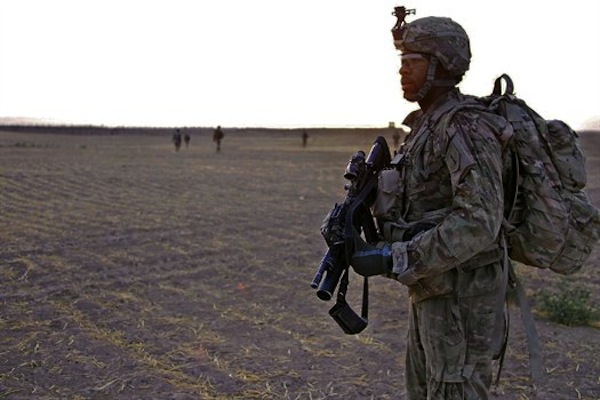Despite the best efforts of the DoD and the VA, the number of suicides among active duty service members and veterans continues to rise, and now a new study published in the Journal of the American Medical Association (JAMA) has found that, contrary to popular belief, combat tours are not to blame for the rise.
The study was conducted by various military medical groups and followed a group of more than 145,000 people between 2001 and 2008. The study found that there were specific risk factors in the group for suicide, but combat-related stressors, such as length of deployment, number of deployments, or combat experience did not play a role.
The researchers determined that men were at a higher risk as well as those who were heavy drinkers and those who had mental health problems exclusive of any combat experience. Between 2005 and 2009 there was an exceptionally high number of service members who reported mental health problems such as bipolar disorder or depression, something that the study authors can't account for.
To be clear, PTSD -- most commonly found in combat veterans -- does carry an increased risk for suicide. But, the study found that those who had committed suicide had not had the combat-related experience that can cause PTSD.
According to a report by the VA that looked at the number of veteran suicides, on average, 18 veteran deaths per day are the result of suicide. VA Secretary Eric K. Shinseki says this is unacceptable.
"The mental health and well-being of our courageous men and women who have served the Nation is the highest priority for VA, and even one suicide is one too many," he said. "We have more work to do and we will use this data to continue to strengthen our suicide prevention efforts and ensure all Veterans receive the care they have earned and deserve."
Testifying before the House's military personnel subcommittee in March, Jacqueline Garrick, acting director of the Defense Suicide Prevention Office, said the suicide rate among service members had increased from 10.3 to 18.3 per 100,000.
"DoD fervently believes that every one life lost to suicide is one too many, and prevention is everybody’s responsibility," Shinseki echoed Garrick's sentiments. "This fight will take enormous collective action and the implementation of proven and effective initiatives."
Last year, the VA and the DoD launched a number of initiatives aimed at reducing the number of suicides, but so far they don't appear to be having much of an impact based on the most recent statistical data.
The DoD has closely tracked every suicide and attempt since 2008, Garrick said in her testimony, and the trends that have emerged echo that of last week's JAMA study, "less than half had deployed, and few were involved in combat."
She also explaining that those who attempted suicide, but failed, were similar in demographics to those who died.
The majority of suicides and attempts were committed by young Caucasian males. In some cases, there was stress in the service member's personal life, such as legal, financial, or relationship issues that contributed to the event. There was no intent communicated and they didn't have any behavioral health issues that were known at the time.
While suicide rates overall are increasing, the opposite is the case at Fort Bliss in Texas. The Army post that is home to some 33,000 soldiers saw a 30 percent drop in suicides last year.
Army Major General Dana J.H. Pittard, the 1st Armored Division and Ft. Bliss commander, said the drop is due to a multi-faceted program designed to decrease the number of preventable deaths and increase troop resilience.
Called the "No Preventable Soldier Deaths" campaign, Pittard says it encompasses 32 different programs that try and reduce high risk behaviors which often lead to preventable deaths and encourage soldiers to be their brother's keeper.
"It takes a comprehensive and holistic approach to try to reduce preventable soldier deaths," Pittard said. "So we have united the resources of our entire installation -- our hospital, our fitness program and our wellness programs -- in getting at this challenge together."
The approach appears to be effective. The entire installation had 4 confirmed suicides last year, which is significantly less than the average across the rest of the services, and the rest of the force is taking notice. Some of the same programs in place at Fort Bliss are in the process of being implemented across the services.
Although there has been success, Pittard says that there is still more to be done.
"We are not going to be satisfied until we have zero preventable deaths, consistently," he said. "So even though we’ve made some successes, we are a long way from where we want to be."
Meanwhile, the commander will continue to focus on creating a "culture of seeking help" in an attempt to lessen the stigma of seeking out mental health care.
"We are only partially there, because cultural change takes time," Pittard said. "But we have some strong efforts in that direction."

